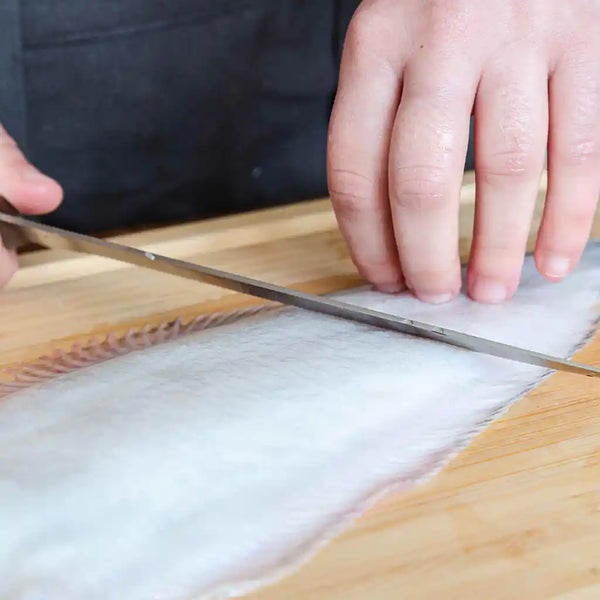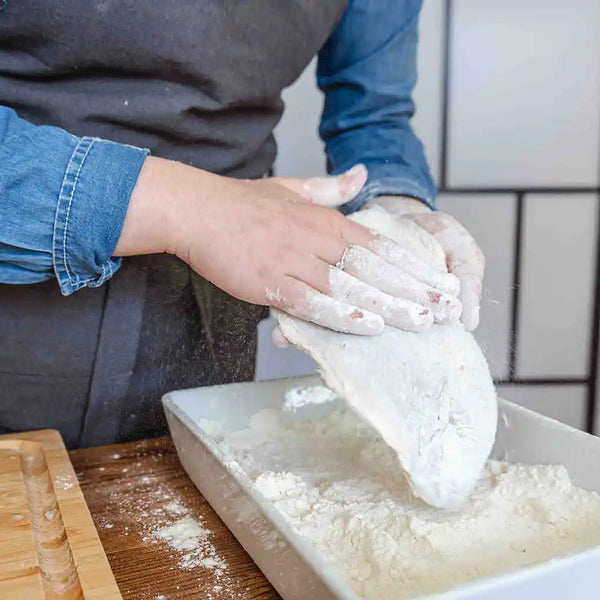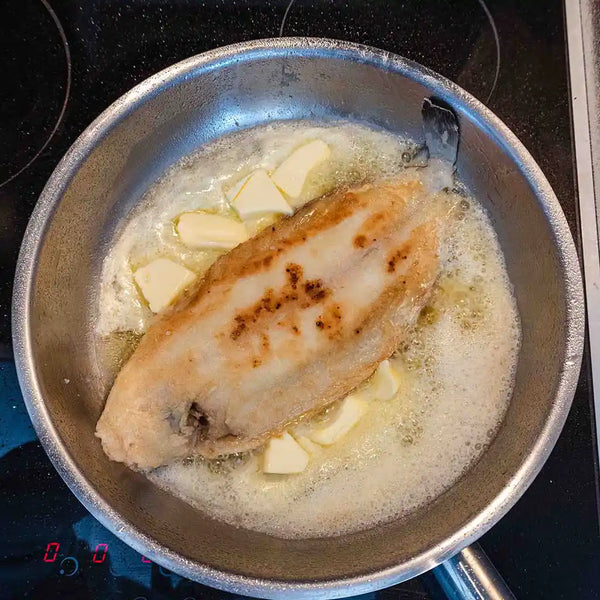Portion(s): 2


Cooking time: ±10 min

Preparation time: ±5 min

Difficulty: easy
Discover our recipe for sole meunière, a French classic!
Sole meunière is a traditional French dish that will delight your guests on any occasion.
Made with simple, fresh ingredients, this dish is an absolute must in many French households! With just a fresh sole, a sprig of parsley, a juicy lemon, a handful of flour, oil, butter, salt and pepper, this recipe perfectly embodies the refined simplicity of French cuisine.
A classic of French gastronomy, this recipe has conquered the world thanks to its simplicity and exquisite flavours. Let yourself be tempted by our sole meunière recipe, ideal if you want to cook quickly.
Ingredients required:
- 2 filets of sole
- Flour
- 25g butter
- 1/2 lemon (juice)
- Parsley
- Olive oil
- Salt and pepper
Time to prepare the sole meunière!
Discover the different stages of our sole meunière recipe in the photos below, and watch our video tutorial at the end of the article!

Step 1: Preparing the sole.
Start by making a small cut in the tail of the sole so that you can gently lift the skin off the fish.

Step 2: Preparing the sole.
Once the skin has been lifted sufficiently, place a sheet of kitchen paper in each hand. Take hold of the tail of the sole with one hand, and with your second hand, remove the skin from the fish using a gentle, even movement.

Step 3: Preparing the sole.
After removing the skin, turn the fish over so that you can scrape off the scales from the white part of the sole using your filet knife.

Step 4: Preparing the sole.
Rinse the sole with water to remove any remaining scales.

Step 5: Preparing the sole.
Season the fish on both sides with coarse salt. Then spread some flour in a bowl before dipping the sole filets in it, taking care to shake off any excess flour.
Next, heat a frying pan with a little oil over medium heat.

Step 6: Cooking the sole.
When the oil is sufficiently hot, carefully place the sole filets in the oil, placing the part with the white skin first.
Leave the sole to cook for 2 to 3 minutes until the fish is golden brown and slightly crispy.
TIP: Make sure your pan is hot enough before adding the filets, as this will help to develop a crispy crust.

Step 7: Cooking the sole.
Gently turn the sole filets over with a spatula and leave to cook for a further 2 minutes.
Then add the butter, cut into pieces, and leave to melt. The butter will add flavor and richness to the dish, as well as helping to brown the filets.
TIP: Be sure to use a thin spatula to avoid breaking the filets, which are very delicate!

Step 8: Cooking the sole.
Pour the lemon juice into the hot pan and let it sizzle for a few seconds before spooning it over the fish.

Step 9: Serve the sole meunière.
Once cooked, place the sole filets on a plate. Pour generous spoonfuls of sauce over each filet.
Season your sole filets with a little lemon juice (if you have any left), ground pepper and freshly chopped parsley.
NOTE: The head of the sole is often left intact in traditional French cooking, as it adds flavor to the dish. However, we have decided to remove it after cooking. The choice is yours!

Enjoy your sole meunière with steamed vegetables or pan-fried potato slices. Don't forget to accompany your dish with slices of crusty bread.
Bon appétit!
KOTAI's advice:
- Always use a sharp filet knife to prepare fish filets, otherwise a dull blade could slip and cause injury. Maintain your blades with a honing steel or a whetstone (180/800 or 2000/6000), following our sharpening and honing tutorials!
- If you can't find a sole, you can use other types of flatfish such as dab. Alternatively, St Pierre is another fish that can be used for this recipe, although it is not a flatfish, it is so thin that it can be used as is.
- Don't hesitate to accompany your sole meunière with a dry white wine, such as a Sauvignon Blanc or Chardonnay!




